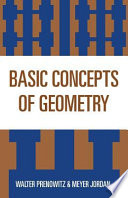 | Walter Burton Ford, Charles Ammermann - Geometry, Modern - 1923 - 406 pages
...70°, 90°, and 80°, respectively, find the sides of the polar triangle (in degrees). 367. Theorem IX. The sum of the angles of a spherical triangle is greater than 180° and less than 540°. FIG. 264 Given the spherical A ABC having the sides a, b, and c. To prove... | |
 | David Eugene Smith - Geometry, Solid - 1924 - 256 pages
...respectively supplementary. SPHERICAL POLYGONS BOOK VIII Proposition 14. Sum of the Angles of a Triangle 201. Theorem. The sum of the angles of a spherical triangle is greater than 180° and less than 540°. Given the spherical A ABC. Prove that 180° < ZA + Z 5 + ZC < 540°. Proof.... | |
 | Elisha Mitchell Scientific Society (Chapel Hill, N.C.) - Natural history - 1924 - 738 pages
...There is nothing startling in this statement because, since the time of Euclid, it has been known that the sum of the angles of a spherical triangle is greater than 180°. Whether the sum of the angles of a triangle is equal to, greater than, or even less than, 180°,... | |
 | College Entrance Examination Board - Universities and colleges - 1924 - 126 pages
...lines at their point of intersection, it is perpendicular to the plane of the two lines. 6. Prove: The sum of the angles of a spherical triangle is greater than 180° and less than 540°. 7. Four balls have equal diameters of 2 inches, and fit into a cylindrical... | |
 | Baltimore (Md.). Department of Education - Mathematics - 1924 - 182 pages
...equiangular. 3 . Each side of a spherical triangle is less than the sum of the other two sides. 5 . The sum of the angles of a spherical triangle is greater than 180° and less than 540°. 6 . A plane tangent to a sphere is perpendicular to the radius drawn to... | |
 | National Committee on Mathematical Requirements - Mathematics - 1927 - 208 pages
...other two sides. [74] 48. The sum of the sides of a spherical polygon is less than 360°. [75] 49. The sum of the angles of a spherical triangle is greater than 180° and less than 540°. [78*] 50. There cannot be more than five regular convex polyhedrons. [35]... | |
 | Pauline Sperry - Spherical trigonometry - 1928 - 88 pages
...of article 11, prove: Theorem 1. Each angle of a spherical triangle is less than 180°. Theorem 2. The sum of the angles of a spherical triangle is greater than 180° and less than 540° (art. 9, th. 2). Theorem 3. // two angles of a spherical triangle are equal... | |
 | Harvard University - Education - 1876 - 324 pages
...opposite to it in the other. 8. Any side of a spherical triangle is less than the sum of the other two. 9. The sum of the angles of a spherical triangle is greater than two and less than six right angles. 10. The volume of a spherical pyramid is equal to the area of its base... | |
 | Hans Hahn - Science - 1980 - 167 pages
...whose sides are arcs of great circles, and it is a well-known proposition of elementary geometry that the sum of the angles of a spherical triangle is greater than 1 80 degrees, and that the excess over 180 degrees is greater the larger the surface area of the triangle.... | |
 | Walter Prenowitz, Meyer Jordan - Mathematics - 2012 - 380 pages
...the only possible definition. It is interesting to note that in Euclidean three-dimensional geometry, the sum of the angles of a spherical triangle is greater than 180°, and the area of a spherical triangle is denned to be its "excess," that is, the sum of the degree... | |
| |